Did you know that the first ever tampon was invented way back in Ancient Egypt when they were made from papyrus plant? Periods and tampons go back a long way, and there are plenty of reasons why it’s a relationship that’s stood the test of time. Tampons provide reliable protection, even when swimming on your period! They can also be kind to both your body and the planet when you choose plastic free, organic cotton tampons.
Tampons are a popular way of managing periods, but there are many people around the world who choose not to use them for various cultural and religious reasons – something to bear in mind if you’re travelling on your period. If you’re new to tampons, they can be a little daunting. In fact, we often get asked how to put a tampon in and what it’s like using one for the first time. That’s why we’ve put together this step-by-step guide for how to put a tampon in – including tips on preventing period leaks when you’re wearing one!
Choose your tampon type
The first step towards putting a tampon in is deciding which type you’d like to use – an applicator or non-applicator tampon. Depending on which you choose, the way you use the tampon changes. Read up on both application methods below to help you decide which you’re most comfortable with.
Wash your hands
You need clean and dry hands every time you put a tampon in, so wash your hands thoroughly with soap beforehand. You’re about to get up close and personal with some of your most sensitive skin and an entrance to your body, so washing your hands is essential to avoid unwanted germs.

Get into position
Being comfortable and having easy access to your vagina are the two key things to remember when finding the best position to put your tampon in. We recommend either sitting on the toilet with your knees spread wide, or standing, with one leg raised to have your foot on a ledge – the toilet seat is usually a good call.
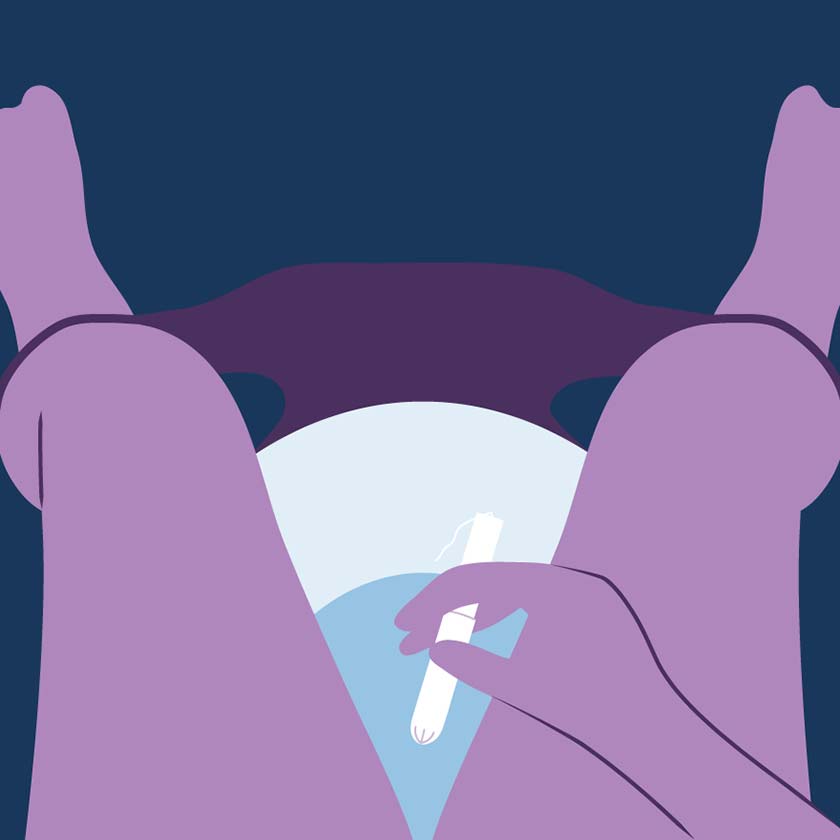
These positions will help to make finding your vagina with the tampon as easy as possible and they aren’t overly strenuous – so you’re unlikely to find them uncomfortable. You might find that there’s another position that works better for you over time.
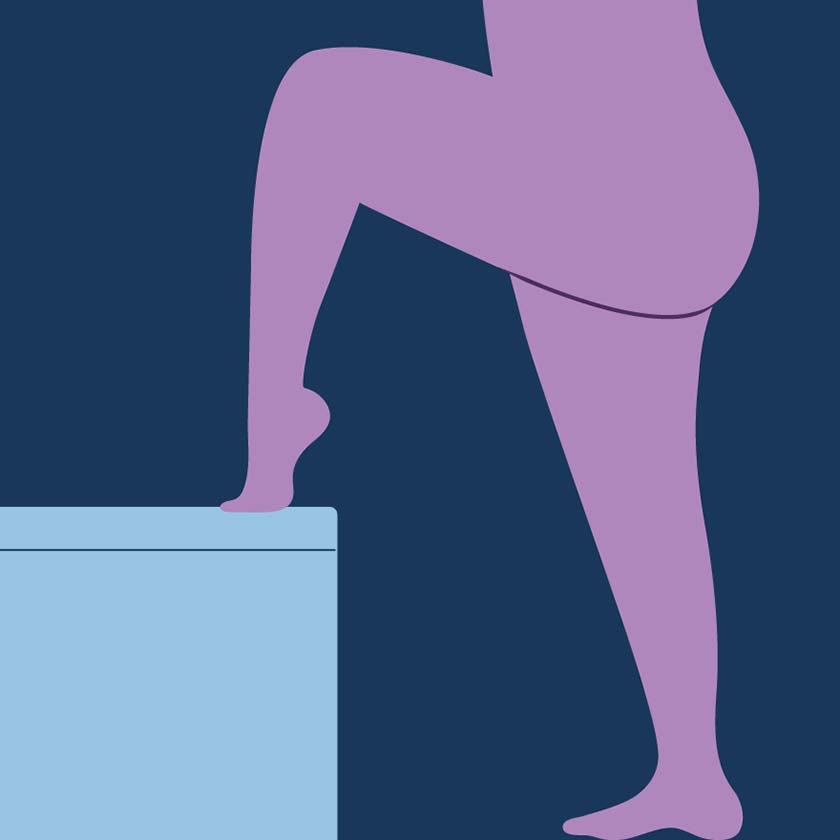
Relax your muscles
If you’re tense, you’ll find it more difficult putting in a tampon because you might be clenching your vaginal muscles, making your vagina harder to find and fitting the tampon inside more difficult. Feeling a bit nervous about using a tampon for the first time? Take a couple of deep breaths and relax your body – the more at ease you feel, the easier putting in a tampon will be.
How to put in an applicator tampon
Skip to non-applicator tampons
Now that you’ve washed your hands, are in position and relaxed, you’re ready to put your applicator tampon in. Take a tampon from the box and remove the wrapper. If you’re using a biodegradable carboard applicator like Natracare’s applicator tampons, twist the two halves of the applicator – see below.
Hold the tampon between your thumb and middle finger where the two halves of the applicator overlap. Make sure the string is facing away from your body when inserting and give it a gentle pull to check it’s secure. Place your index finger on the string end of the applicator and position the other end of the applicator to the opening of your vagina.
Slowly insert the top of the applicator into your vagina at a 45-degree angle, aiming towards the small of your back, and keep going until your thumb and middle finger reach your vagina. At this point, use your index finger to push the end of the applicator, releasing the tampon into your vagina.
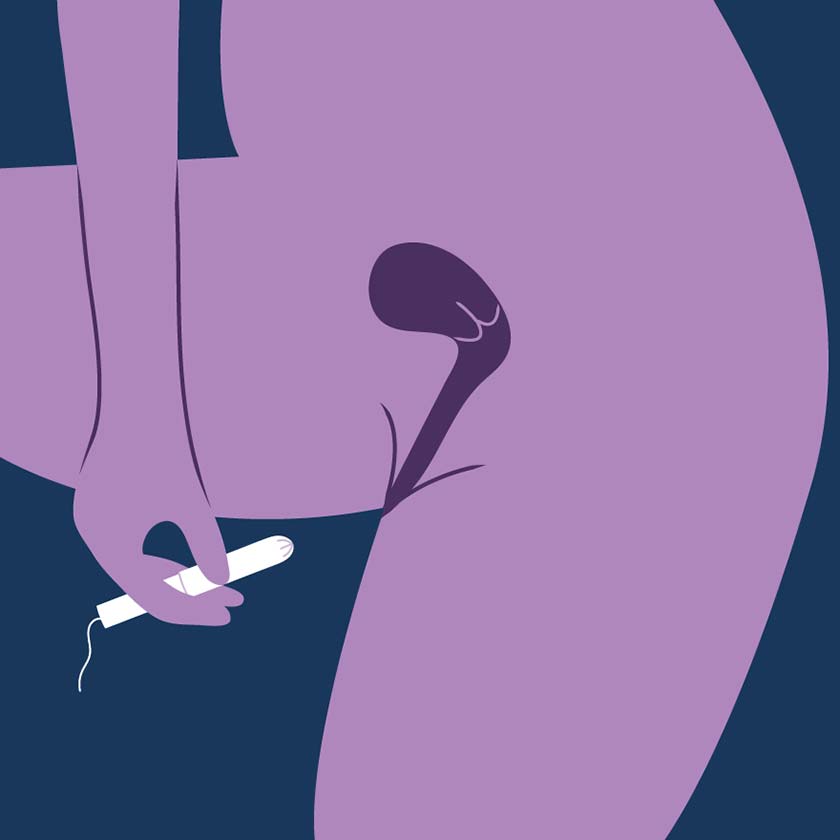
Did you know that around 20% of people with a uterus naturally have a retroverted uterus? This means the uterus tilts backwards towards the spine instead of forwards. This is totally normal, but it does mean it can be painful when inserting an applicator tampon! So, if inserting an applicator tampon is painful for you, maybe try other period products that might be more comfortable.
How to put in a non-applicator tampon
If you’re using a non-applicator tampon, putting it in is a little different – but washing your hands, getting into position and relaxing your vaginal muscles are still the important first steps. Take your tampon and remove the outer wrapping.
Pull the string gently to make sure it’s dangling from the bottom of the tampon and is held securely. Don’t worry, the string won’t break! Take hold of the tampon between your thumb and middle finger, with the string facing away from your body.
Place your index finger on the string end of the tampon and position the other end to the opening of your vagina. Aiming towards the small of your back at a 45-degree angle, slowly insert the tampon into your vagina and keep pushing it inside you until it won’t go any further and you can no longer feel it.
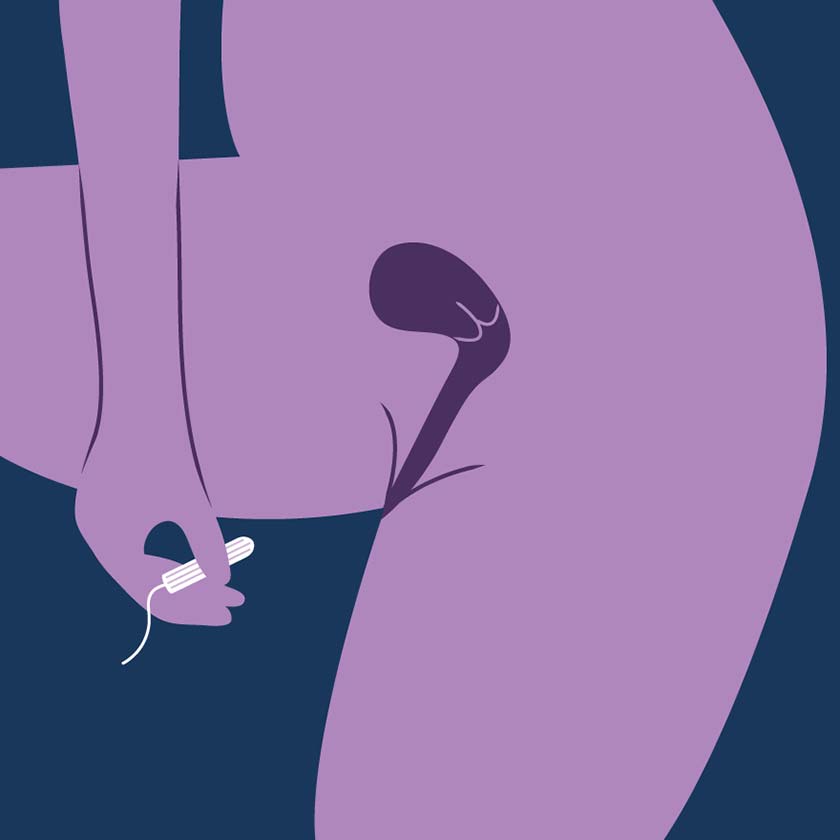
Check for comfort
Whichever type of tampon you choose, once it’s in you should check that you feel comfortable. You shouldn’t be able to feel the tampon inside you as you go about your day. It definitely shouldn’t feel painful or as if it might fall out. If you feel pain or discomfort, the tampon is likely not pushed in deep enough, so have a reshuffle or try again. If you feel comfortable, you’re good to go!
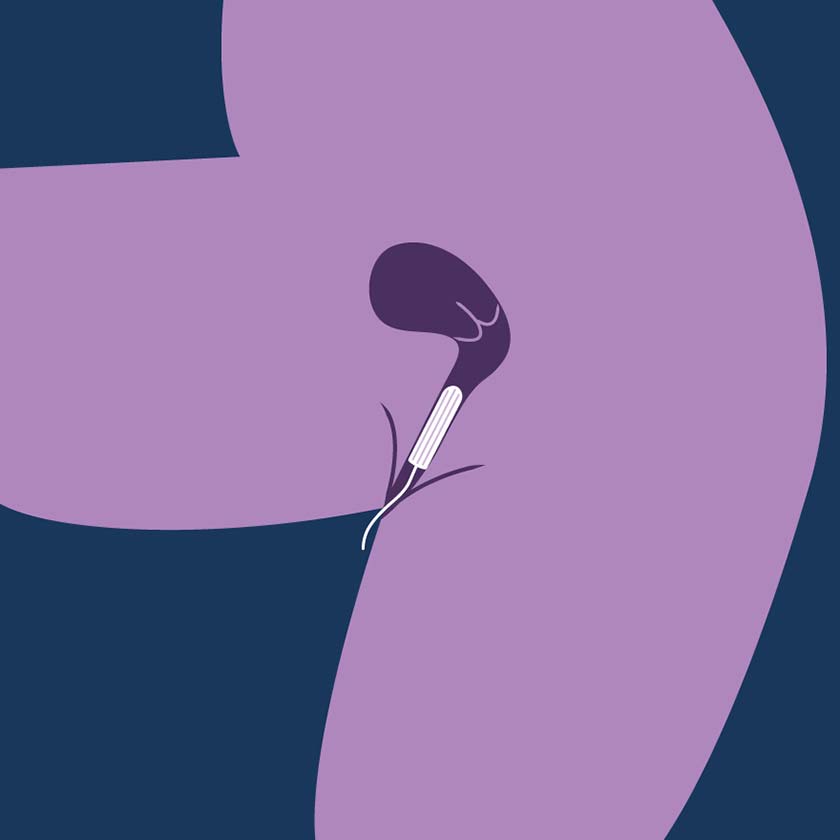
Rinse and repeat
Like every time you go to the bathroom, you should wash your hands again after putting in a tampon to avoid spreading germs as you go about your day.
One important question we’re often asked is: ‘How long can you leave in a tampon?’. Your tampon should be changed every four to six hours. It’s important to change your tampon regularly and not to sleep wearing one because leaving a tampon in too long can put you at risk of Toxic Shock Syndrome.
Know what you’re putting in your body?
Natracare tampons are made with 100% organic cotton and nothing else.

try organic tampons today
Preventing period leaks with a tampon
We’ve all been there! From contorting your body in the bathroom mirror, checking for stains to avoiding light coloured clothes every month. For a lot of us, worrying about period leaks is a very real and common feeling – especially when we’re new to having periods. When wearing a tampon, these tips will help you to stop worrying about your period leaking through your clothes:
Choose the right absorbency
When you choose your tampons, deciding between an applicator or non-applicator is not the only choice you’ll have to make. You’ll also need to choose which absorbency tampon to use to match however light or heavy your flow is. Always opt for the lowest absorbency that you need. Keep in mind that you may use different absorbencies throughout your period as your flow will change from start to end.
Put it in properly
Follow the instructions above or on the pack and be sure to check you feel comfortable (as though there isn’t anything inside of you) when you put a tampon in. This will help to make sure that the tampon is able to do its job correctly, and you can get on with your day in peace.
Change regularly
Leaving your tampon in for too long can cause leaks. It could also be dangerous – leading to Toxic Shock Syndrome. Make sure you keep track of how long you’ve had a tampon in for and change it regularly. This will help you to stop period leaks and minimise any risk of TSS.
Wear a panty liner
If you’re worried about your period leaking through your clothes when you wear a tampon, wear a panty liner. On your heavier days place a liner in your underwear as well as the tampon, just in case. This way, if your tampon leaks, any blood will be absorbed by the liner instead of staining your favourite white jeans!
Are you looking to try tampons for the first time? Choose organic and plastic free tampons like ours to be kind to your body and the planet!

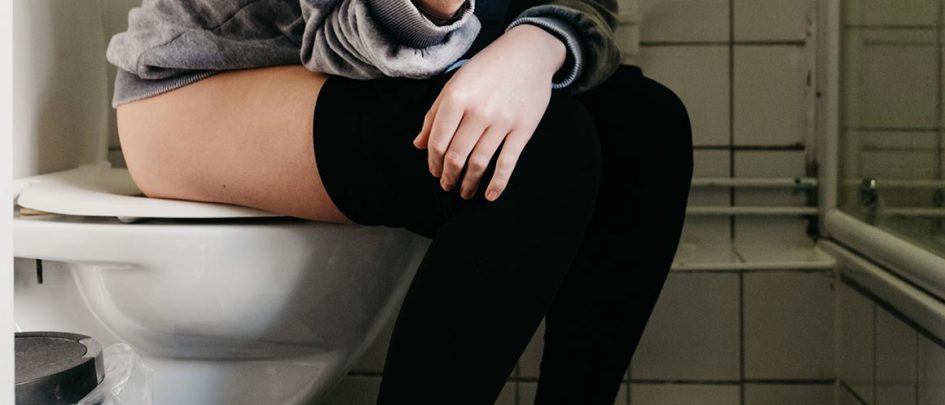
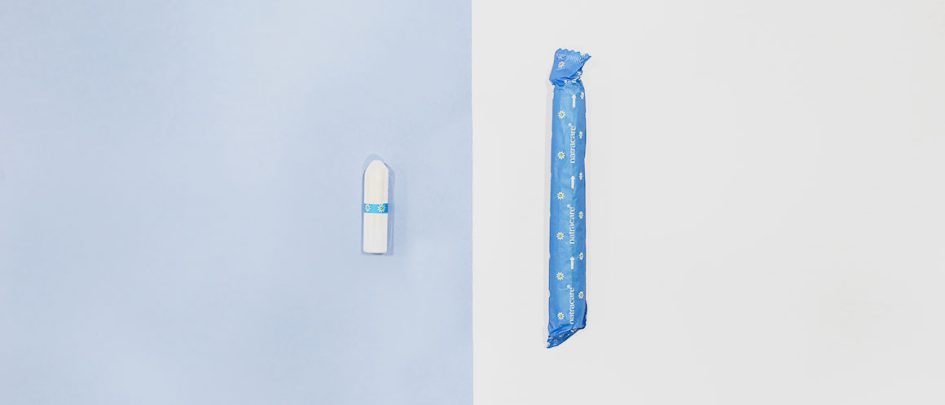







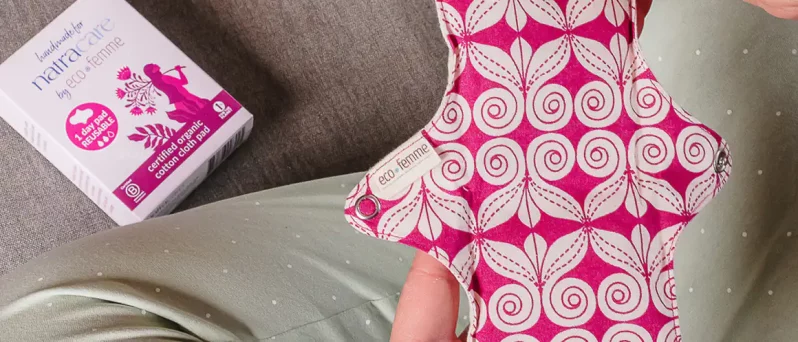

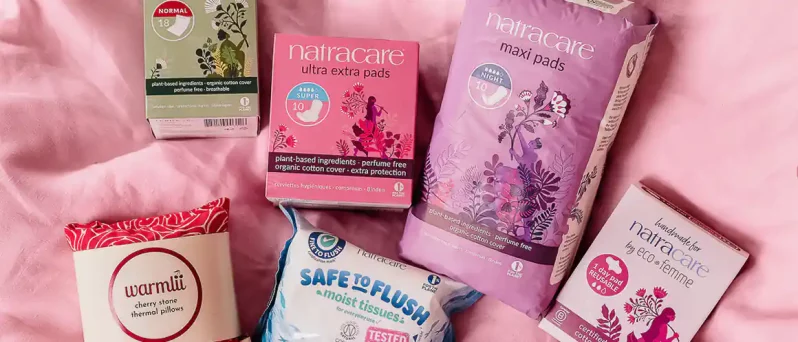
when using non-applicator tampons it’s very important to double check that you’ve removed all the plastic from the wrapping. it will tear into 3 pieces when you peel it from the middle. i accidentally left some plastic on the very end of one and it wasn’t until a few weeks later that i realized my mistake. luckily i did not end up with toxic shock.
Oh no! Glad to hear it worked out okay in the end, definitely a good idea to check all parts of the wrapper are removed before inserting a tampon!
When I am Inserting a tampon it seems to be going downwards not facing to my back and I always end up just wearing a pad…..
How old are you because I have the same problem I’m 12
I started my period (unfortunately) the day I was leaving primary school! I remember it like it was yesterday! I was wearing blue & white stripy sasparellas & when I got home, my Mum picked me up, I went to the toilet for a pee & came out sobbing & my Mum stopped what she was doing & said ‘ what on earth is wrong babe??? I said I don’t know & signalled for her to look down & she said ‘ oh babe, come here & signalled for me to sit & went on to explain about periods. I said ‘ but I don’t want them’.
Oh well that was then & I’m now 44 year’s old & still don’t like periods!! 😂🤣
What a memory! Thanks for sharing your first period story, it sounds like your mum was very supportive.
I’m 12 and I just started 😢
i’m putting the tampon all the way in (at least i think i am) my fingers are touching my vagina and that’s what all the instructions say. however i am leaking but it’s not the dark blood, it’s more like a clear liquid with a drop or two of red coloring so it’s very light. i’m using regular. do i need to be going up in absorbance or does the tampon need to go in more?
Hey! Firstly well done for following the instructions. When a tampon is inserted correctly you shouldn’t be able to feel it inside you. Is this the case with you? If not, you may need a little more practice inserting – in the meantime try also using panty liners for extra protection from leaks. If you can’t feel it inside you and think you are inserting correctly, it might be that you need to change more regularly or increase absorbency. To prevent leaks we recommend changing your tampon every 4-6 hours. We hope this helps!